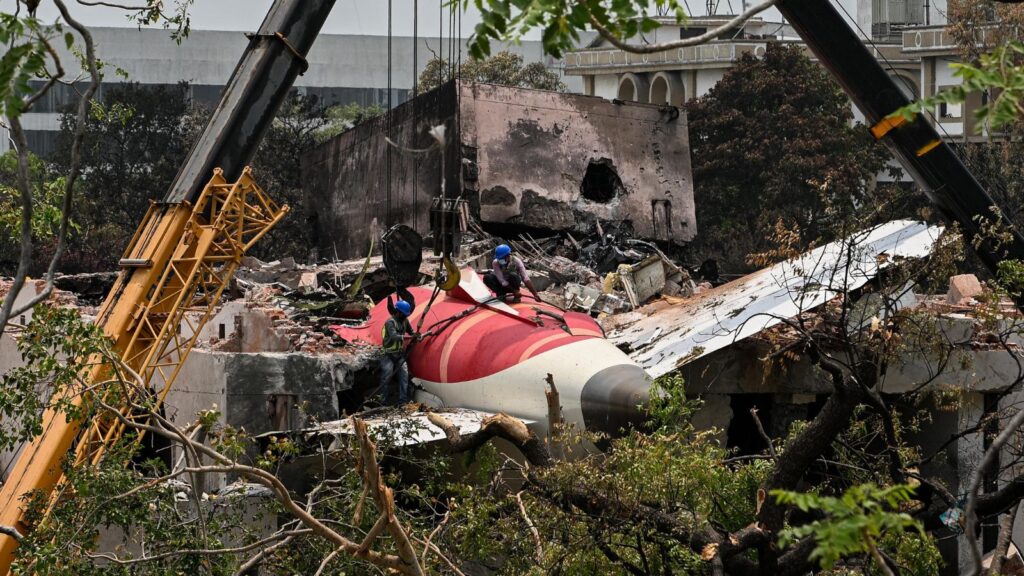970x125
Following the release of the preliminary report of the investigation into the June 12 crash of an Air India Boeing 787-8 aircraft, Abu Dhabi-based airline Etihad has ordered a precautionary check of the engine fuel control switches on its 787 fleet, it is learnt. The airline issued an EWI—engineering work instruction—for its Boeing 787 fleet on Sunday, laying down the procedure for the inspection of the critical switches’ locking feature for proper engagement.
970x125
In response to queries on the matter, an Etihad spokesperson said: “Etihad always ensures its maintenance is fully compliant”.
Other airlines and countries could also order similar checks. A report by news agency Reuters said that South Korea’s transport ministry is also preparing to order all airlines in the country that operate Boeing jets to examine fuel switches, according to the ministry’s foreign media spokesperson. The spokesperson did not give a timeline for the checks.
This comes despite the US Federal Aviation Administration (FAA) and Boeing notifying Boeing 787 operating airlines that the fuel switch locks on the aircraft are safe. As Boeing aircraft are designed and manufactured in the US, aviation regulators and airlines all over the world usually act in line with the FAA’s directions and standards. They are, however, free to conduct additional checks of their own even if it is not advised by the FAA or the aircraft manufacturer.
The preliminary investigation report released by India’s Aircraft Accident Investigation Bureau (AAIB) has zeroed in on the most probable primary cause of the accident—the engines being starved of fuel with the transitioning of the fuel control switches from ‘RUN’ to ‘CUTOFF’ position within a second of each other moments after lift-off. From the cockpit voice recorder data, the report notes that one of the pilots asked the other why he cut off the fuel, to which the other pilot responded saying he did not. The report just says the engine fuel control switches that allow and cut fuel flow to the plane’s engines transitioned from RUN to CUTOFF. It does not state these were moved by either of the pilots.
Notably, the report also makes mention of the 2018 Special Airworthiness Information Bulletin (SAIB) issued by the FAA, regarding the “potential disengagement of the fuel control switch locking feature”. Air India, however, did not carry out the inspection as the SAIB was merely advisory and not mandatory. Moreover, the cockpit’s throttle control module—which houses the fuel control switches among others—was replaced in 2019 and 2023, but the reason for replacement was not linked to the fuel control switches. The initial report said that no defect pertaining to the fuel control switches on the aircraft was reported since 2023.
The EWI issued by Etihad for its Boeing 787 fleet says that the inspection team should try to gently move both engine fuel control switches—there is one for each of the two engines—from CUTOFF TO RUN without applying excessive force or lifting the switch, and the repeat the same procedure to attempt a movement from RUN to CUTOFF, it is learnt. If the switches are unable to move without lifting, it would mean the locking feature is functional, and no further action would be needed. However, if they move freely without lifting, the locking feature would be considered as failed or disengaged, and in such a case, Etihad engineers have been instructed to replace the thrust control module, it is learnt.
Story continues below this ad
Experts say accidental movement of the switches—used to allow and cut fuel supply to the aircraft’s engines—is not quite possible. The spring-loaded switches have brackets on either side to protect them and there is a stop lock mechanism that requires the pilots to lift the switch up before moving it between either of its two positions—RUN and CUTOFF.
Apart from calls from some pilots and experts to examine the possibility of inadvertent movement of the switches due to disengagement of the switch lock mechanism, component fatigue, or mechanical failure, some have opined that the AI 171 crash investigators should closely examine whether an electrical or software malfunction could have signalled to the aircraft system that the switches were in cut-off mode, even if they had not been actually moved.
© The Indian Express Pvt Ltd
970x125


